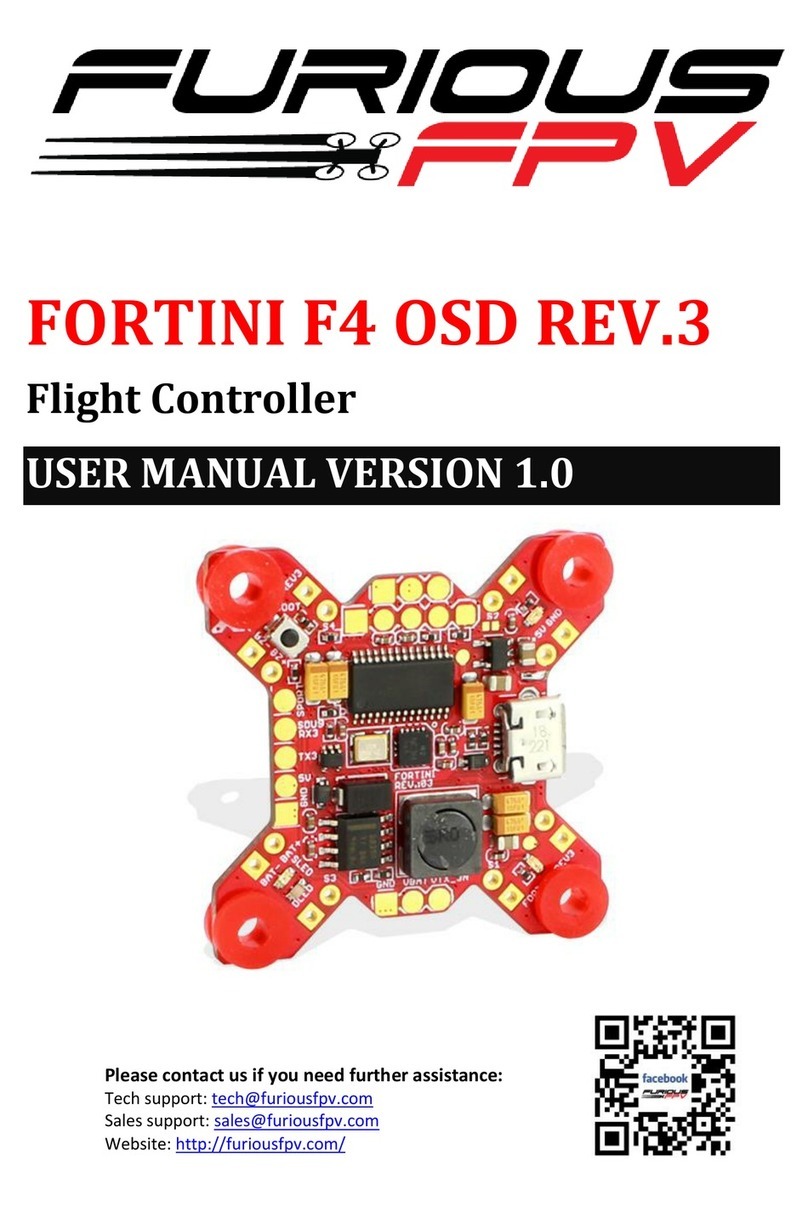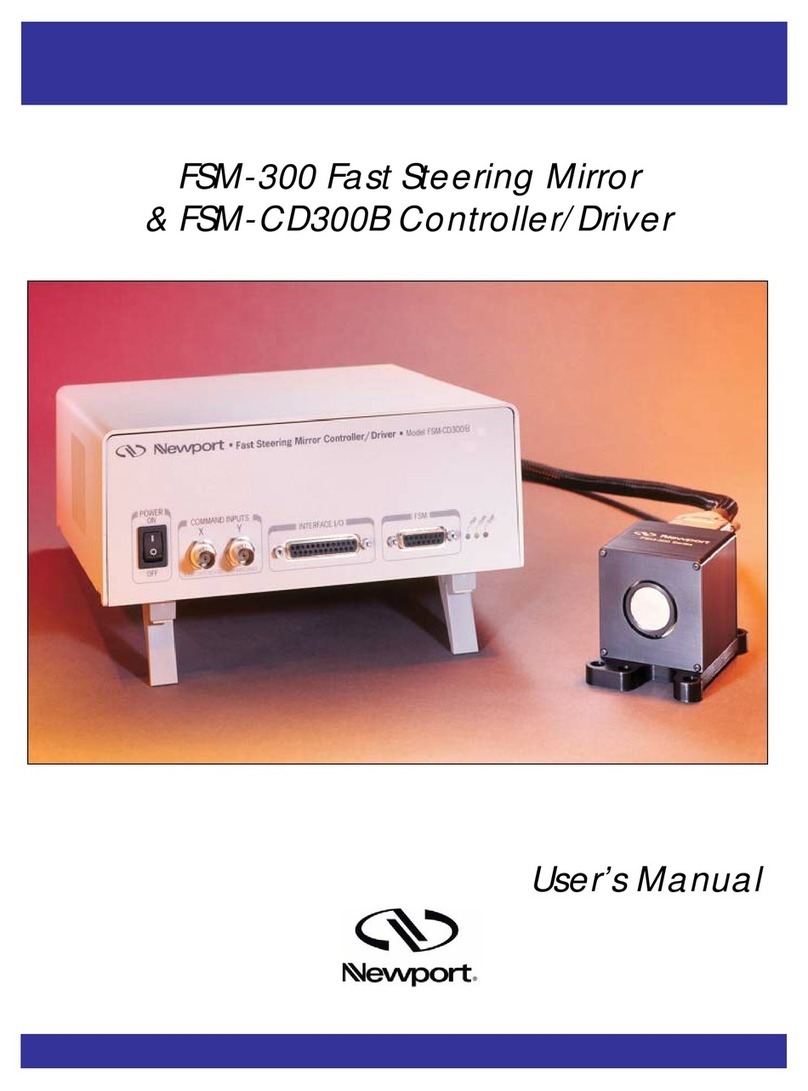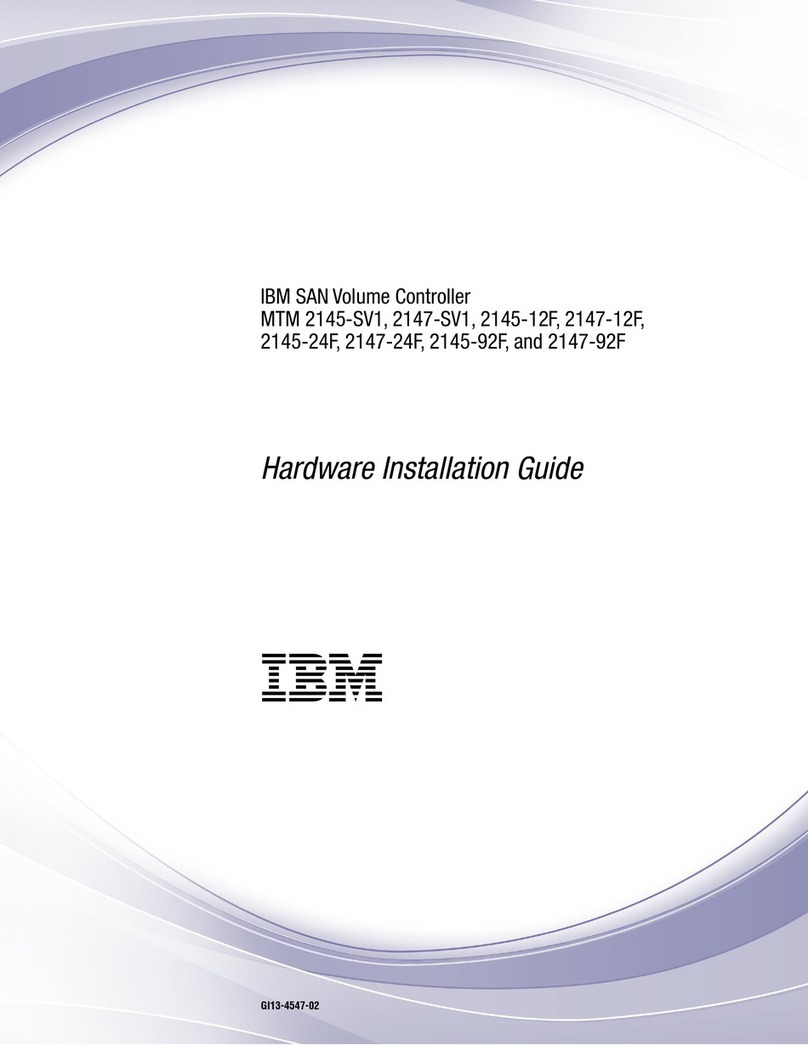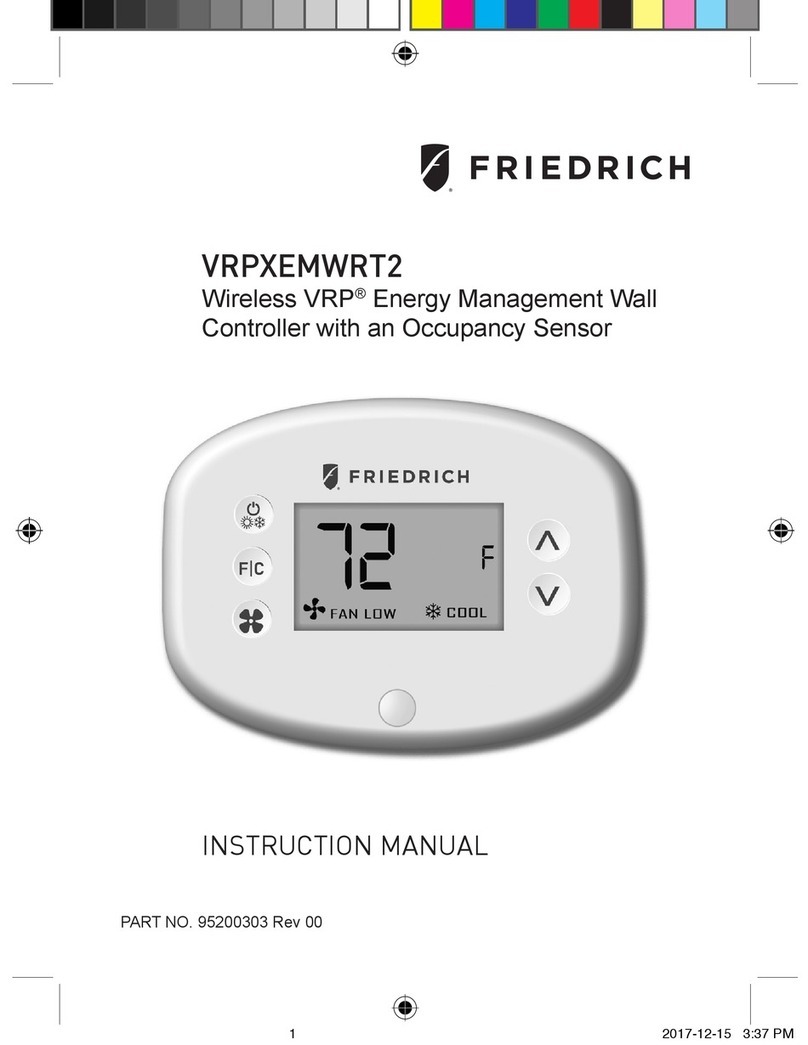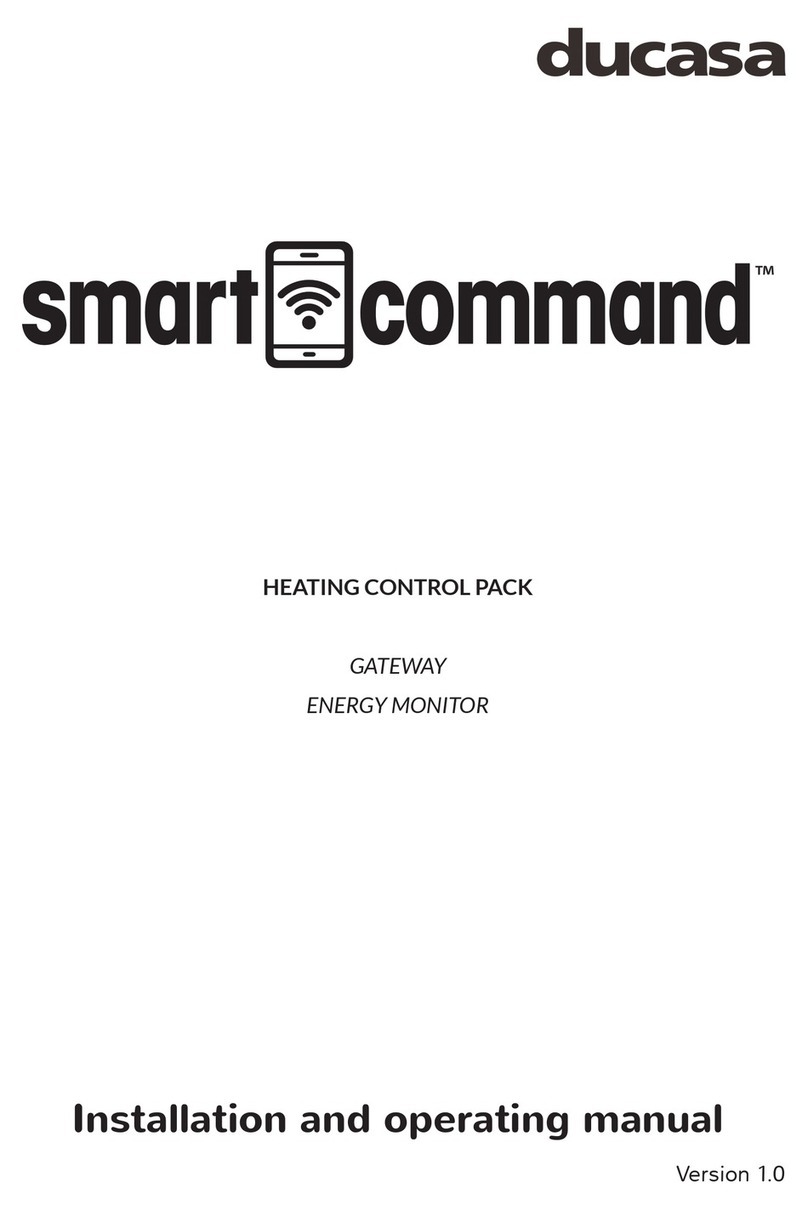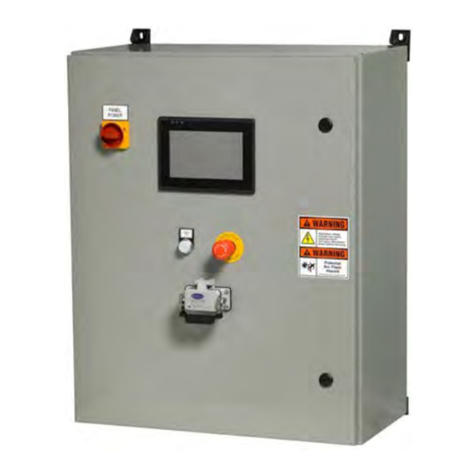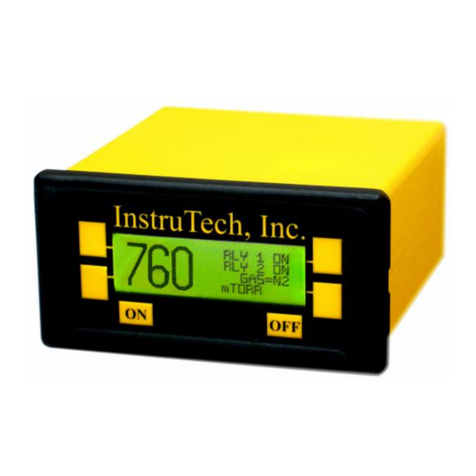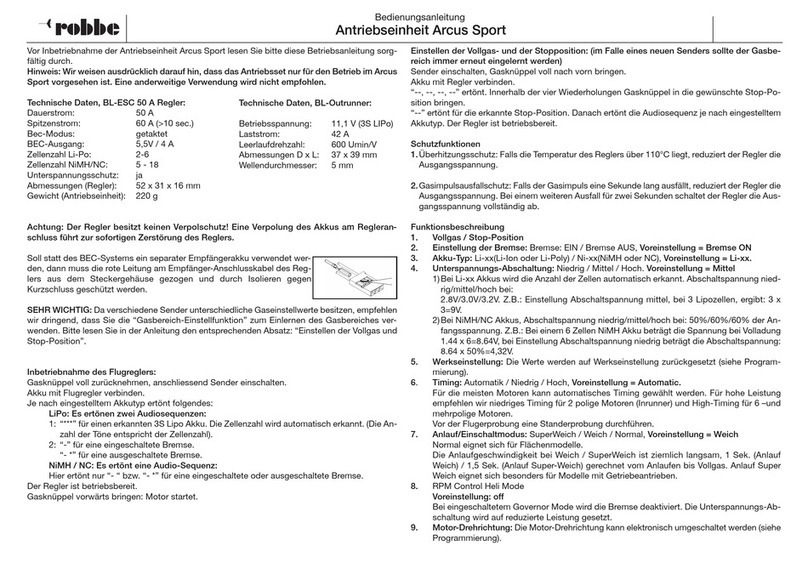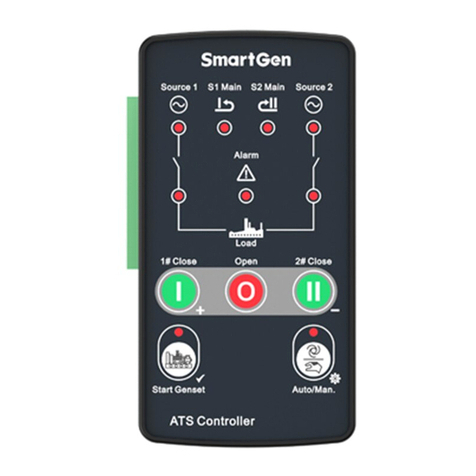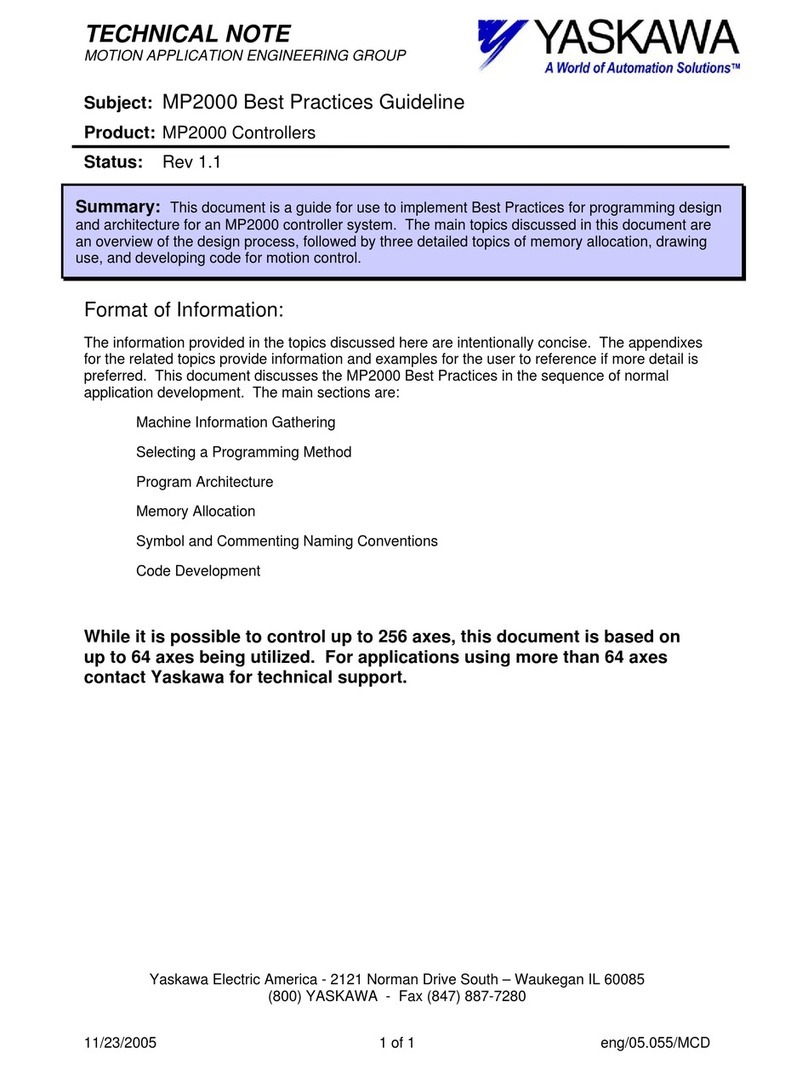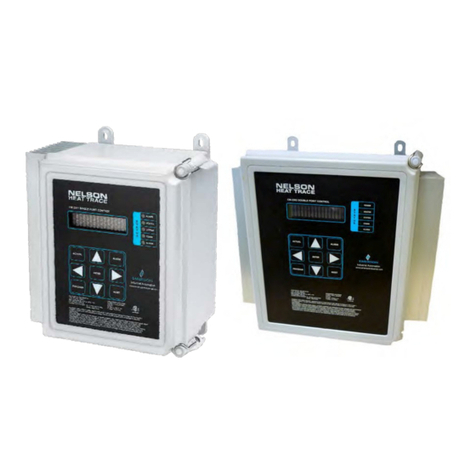AEA PAKRATT PK-232 User manual

ADVANCED ELECTRONIC APPLICATIONS, INC.
PAKRATT ™
MODEL PK-232
Multi-Mode Data Controller
Operating Manual

USER'S GUIDE PREFACE
PREFACE TO THE PK-232 DATA CONTROLLER
Plea e read thi preface in it entirety. It contain information about how to receive warranty er-
vice from AEA, the current oftware in talled in your PK-232, AEA' oftware update policy and
how to get involved in the digital radio community.
RF interference nformation To User
Thi PK-232 ha been certified under Subpart J of Part 15 of the FCC rule .
Thi equipment generate and u e radio frequency energy. If it i not in talled and u ed properly,
that i , in trict accordance with AEA' in truction , it may cau e interference to radio and TV re-
ception. It ha been type-te ted and ha been found to comply with the limit of a Cla B comput-
ing device in accordance with the pecification in Subpart J of Part 15 of the FCC rule , which are
de igned to provide rea onable protection again t uch interference will not occur in a particular
in tallation. If thi equipment doe cau e interference to radio or TV reception, which can be de-
termined by turning the PK-232 on and off, the u er i encouraged to try and correct the interfer-
ence u ing one or more of the following mea ure :
Reorient the antenna of the device receiving interference.
Relocate the computer with re pect to thi device.
Plug the computer into a different outlet o the computer and the device are on different
branch circuit .
USE SHIELDED CABLE FOR ALL RS-232 CONNECTIONS !
A part of it continuing program of product improvement, AEA re erve the right to make change
in thi product' pecification . Change will be made periodically to the information in thi docu-
ment. The e change will be incorporated in new i ue of thi manual.
There may be technical inaccuracie or typographical error in thi document. Plea e addre com-
ment and correction to AEA Incorporated, PO Box C2160, Lynnwood, WA 98036-0918. AEA re-
erve the right to incorporate and i ue any information thu upplied in whatever manner it
deem uitable without incurring any obligation whatever.
SECOND ISSUE (SEPTEMBER 1986)

USER'S GUIDE PREFACE
Welcome
Congratulation !! You've purcha ed another fine AEA product.
PLEASE, before we go any further, may we a k you to FILL OUT AND RETURN the Warranty Regi -
tration Card, which ha been packed with your PK-232 y tem.
WE WILL NOT BE ABLE TO FURNISH YOU WITH ANY UPDATES TO THE SOFTWARE IF YOU DO
NOT RETURN THE ABOVE DOCUMENT. AS NEW FEATURES ARE DEVELOPED, WE ARE SURE YOU
WILL WANT TO BE ABLE TO OBTAIN THEM.
If you call for any kind of cu tomer a i tance, we'll a k you for the erial number on you warranty
card. Becau e of the numerou ituation in which our product i u ed by an unauthorized third
party, we MUST verify that you are the licen ed u er. We may choo e to call you at the phone
number li ted in our record to verify your identity. THANK YOU for your patience.
Product Update Policy
From time to time AEA will make available update to the de ign of it product . The e ometime
are made available to the u er who ha previou ly purcha ed it product . We can only tell you
about the e update if we have your warrant card. PLEASE SEND IT IN if you have not already
done o. Future ver ion of oftware for the PK-232 will mo t likely become available. AEA will
make the e update available, if po ible.
n Case of Trouble
Application and trouble hooting a i tance may be had by calling AEA during our 8-12, 1-4:30
working hour in Seattle WA. A k for the Cu tomer Service Department. The phone number i
(206 775-7373. Plea e have your product erial number and ver ion date of the oftware available.
The ver ion date i on the fir t creen that come up when you turn on the PK-232. We will al o
need to know the nature of any other equipment connected to the PK-232.
Plea e attempt to olve problem locally, u ing other ham or an AEA dealer. Sub tituting a PK-80
or other TNC that you know i working properly for your que tionable one i a diagno tic techni-
que that will check out the re t of your tation. Al o try running your PK-232 in another tation.
If you call for a i tance, plea e have your PK-232 up an running be ide the phone. Our ervice
technician will likely a k you to perform certain keyboard routine to aid in diagno i . If you have a
voltmeter handy, you might have the PK-232 open o you can report mea urement to the ervice
technician.
PLEASE DO NOT RETURN THE PK-232 TO US WITHOUT CONTACTING US FOR PERMISSION
FIRST. WE WOULD LIKE THE OPPORTUNITY TO TROUBLESHOOT THE PROBLEM OVER THE
PHONE FIRST, SAVING YOU BOTH TIME AND MONEY.
If you end u the PK-232 by UPS it mu t be ent to the treet addre - not the po t office box
number. The treet addre i :
AEA. Inc.
206 196th St. SW
Lynnwood, WA 98036
USA
We will need YOUR treet addre for UPS return - be ure and end it.

USER'S GUIDE PREFACE
UPS Surface (Brown Label) take 7-8 day , Blue take 2-3 day and Red i pre ently available on
the We t Coa t only. Red i an overnight ervice and it i expen ive. Send the PK-232 in a way that
it can be traced if we cannot verify receipt of hipment. We ugge t UPS or in ured po tal hip-
ment.
If the PK-232 i till under the original owner warranty, AEA will pay the co t of the return hip-
ment. The current policy i that it will be returned Brown if received Brown or by US Mail; returned
Blue if received Blue or by overnight ervice; or returned a the owner ate in hi letter if he fur-
ni he the return co t for the method he elect .
If the PK-232 i out of warranty, it will be returned by UPS Brown COD unle :
1) It wa received UPS Blue/Red in which ca e it will go back UPS Blue COD, or
2) If you de ignate billing to VISA or MASTERCARD, or
3) you enclo e a BLANK per onal check endor ed "not to exceed ...$", or
4) you pecify ome other method of return.
We will typically ervice the product in two or three day if we have all the fact . If we mu t call
you, it may take longer. PLEASE, if you end it in, include a letter tating the problem and were
you can be reached. If you can be reached by phone in the evening on the ea t coa t, let u know
where. Our current rate for non-warranty ervice i $40/hour with a 3/4 hour minimum. Part and
hipping are extra. AEA i not re pon ible for damage uch a cau ed by lightning, nonprofe ional
alteration , poor torage/handling, etc.
Should your warranty card not be on file at AEA, you need to end the proof of purcha e date to
receive warranty ervice. Typically a copy of your bill of ale from an AEA dealer will uffice.
The warranty i for original owner only and i not tran ferable.

USER'S GUIDE PREFACE
NTRODUCT ON
Welcome to the exciting world of digital Amateur Radio! You've joined the rank of the fa te t
growing mode in Amateur Radio ince the FM repeater.
Your AEA PK-232 Data Controller i the connection between your computer and radio . The PK-232
perform all the "magic" of e tabli hing data and text communication between your tation and
many other communication facilitie equipped for digital communication .
With packet-Radio and AMTOR, you'll have a "private channel" while haring a frequency with oth-
er packet and AMTOR tation ; you'll be able to "read the mail" of other Mor e, RTTY and AMTOR
QSO . log on to computer-ba ed "bulletin board" or "mailbox" ation , handle me age traffic – in
hort, you're now equipped to enjoy the advantage of digital communication and error-correcting
radio technique in your ham hack.
Your new AEA PK-232 i the heart of your digital radio tation. The PK-232' packet y tem oft-
ware i derived from the original TAPR TNC; it pre ent many of the advenced feature of that de-
ign, coupled with ignificant enhancement ba ed on the experience gained by thou and of
TAPR-equipped amateur packet tation worldwide.
Thi manual i your guide into the realm of digital Amateur Radio.
Join a Packet Club - Sbscribe To Newsletters - Join a Voice Net
Join a Packet-Radio club - they exi t in all tate a of thi writing. You might al o ub cribe to the
ARRL publication "Gateway", which de cribe all the "going on" in Packet-Radio, and to the TAPR
"Packet Statu Regi ter", which de cribe the technically intere ting happening in the movement.
There are many voice net on VHF and HF; they u ually meet weekly. They are u ually dedicated
to making the newcomer feel at home.
Acknowledgement
AEA, Inc. gratefully acknowledge the Tuc on Amateur Packet-Radio Corporation, Tuc on, AZ for
permi ion to include excerpt from their TNC-2 documentation in thi manual.
The original U er' Guide to the PK-232 wa developed and written by Norm Sternberg, W2JUP,
and Barbara Argilo on a Tandy 1000HD computer with IBM' Di playWrite 3 program and an IBM
Di playwriter u ing TextPack 6. It wa re-written in February 2016 by DC7XJ. Our thank al o go to
Alan Chandler, Steve Stuart and Joe Schimmel.
AEA, Inc. dedicate it elf to the development of digital radio communication .

USER'S GUIDE TABLE OF CONTENTS
PK232UG Rev. B 9/86 TOC 1 6
TABLE OF CONTENTS
Paragraph Page
CHAPTER 1 – NTRODUCT ON
1.1 Introduction ................................................................................................ 1-1 15
1.2 Scope ......................................................................................................... 1-1 15
1.3 General ....................................................................................................... 1-1 15
1.3.1 Application ....................................................................................... 1-1 15
1.3.2 Specification .................................................................................... 1-1 15
1.3.2.1 De cription ............................................................................ 1-1 15
1.3.2.2 Modem Characteri tic ............................................................ 1-2 16
1.3.2.3 Proce or Sy tem ................................................................... 1-2 16
1.3.2.4 Input/Output Connection ....................................................... 1-2 16
1.3.2.5 Control and Indicator ........................................................... 1-3 17
1.3.2.6 General ................................................................................. 1-3 17
1.3.3 Feature ........................................................................................... 1-3 17
1.4 Sy tem Component .................................................................................... 1-4 18
1.4.1 Input/Output device ........................................................................ 1-4 18
1.4.2 Sy tem Tran mitter-Receiver Performance Requirement ...................... 1-4 18
CHAPTER 2 – NSTALLAT ON
2.1 "QUICK START" INSTALLATION .................................................................... 2-1 19
2.1.1 Equipment Required .......................................................................... 2-1 19
2.1.2 Preauction ...................................................................................... 2-1 19
2.1.3 In tallation ....................................................................................... 2-1 19
2.1.3.1 Initial Control Setting ............................................................ 2-1 19
2.1.3.2 Power Connection ................................................................. 2-1 19
2.1.3.3 Radio Input and Output Connection ........................................ 2-2 20
2.1.3.4 Computer Connection ............................................................ 2-2 20
2.1.4 Control ........................................................................................... 2-3 21
2.1.5 Indicator ......................................................................................... 2-3 21
2.1.5.1 Statu LED ........................................................................... 2-3 21
2.1.5.2 Mode LED ............................................................................. 2-3 21
2.1.5.3 Tuning Indicator ..................................................................... 2-3 21
2.2 Serial Port Configuration ............................................................................... 2-4 22
2.3 Screen Di play ............................................................................................. 2-4 22
2.3.1 Echoe ............................................................................................. 2-5 23
2.3.2 Line Feed and Carriage Return ........................................................ 2-5 23
2.3.3 Screen Width .................................................................................... 2-5 23
2.3.4 Di play Speed ................................................................................. 2-5 23
2.4 Sy tem Start-up and Quick-check .................................................................. 2-6 24
2.5 Command Li t Di play .................................................................................. 2-7 25
2.5.1 Di play Complete Command Li t ........................................................ 2-8 26
2.5.2 Di play Partial Command Li t ............................................................ 2-8 26
2.5.3 Di play A ynchronou Port Parameter ................................................ 2-8 26
2.5.4 Di play Special Character ................................................................. 2-9 27
2.5.5 Di play Identification Parameter ........................................................ 2-9 27
2.5.6 Di play Link Parameter ..................................................................... 2-10 28
2.5.7 Di play Monitor Parameter ................................................................ 2-10 28
2.5.8 Di play Mor e/RTTY/AMTOR Parameter ............................................. 2-11 29

USER'S GUIDE TABLE OF CONTENTS
PK232UG Rev. B 9/86 TOC 2 7
Paragraph Page
2.5.9 Di play Timing Parameter ................................................................. 2-11 29
2.6 Immediate Command ................................................................................. 2-12 30
2.7 "Quick Start" Radio Connection and Set-up .................................................. 2-12 30
2.7.1 FM In tallation and Adju tment .......................................................... 2-14 32
2.7.2 SSB In tallation and Adju tment ......................................................... 2-15 33
2.7.2.1 Connection for Direct FSK Operation on RTTY .......................... 2-17 35
2.7.3 CW In tallation and Adju tment ......................................................... 2-17 35
2.7.3.1 DC Keying .............................................................................. 2-18 36
2.7.3.2 AFSK CW Keying ..................................................................... 2-18 36
2.7.4 O cillo cope Connection ................................................................... 2-18 36
CHAPTER 3 – BAS C OPERAT ON
3.1 Exploring the PK-232 Program ...................................................................... 3-1 37
3.2 LED Statu and Mode Indicator ................................................................... 3-1 37
3.2.1 Statu Indicator LED ........................................................................ 3-1 37
3.2.2 Mode Indicator LED ......................................................................... 3-2 38
3.2.2.1 The DCD LED - Data Carrier Detect .......................................... 3-2 38
3.2.3 LED at Sy tem Start ......................................................................... 3-2 38
3.2.4 Tuning Indicator ................................................................................ 3-2 38
3.3 PK-232 Command ...................................................................................... 3-3 39
3.3.1 Entering Command .......................................................................... 3-3 39
3.3.2 Command Re pon e ........................................................................ 3-3 39
3.3.3 Error Me age ................................................................................. 3-4 40
3.3.4 Command Name .............................................................................. 3-4 40
3.3.5 Default Value .................................................................................. 3-5 41
3.3.6 Parameter , Argument and Value .................................................... 3-5 41
3.3.7 U ing Command Without Argument ................................................. 3-7 43
3.3.8 PK-232 Controller Me age ............................................................... 3-7 43
3.3.8.1 General Me age ................................................................... 3-7 43
3.3.8.2 Command Mode Error Me age .............................................. 3-8 44
3.3.9 Link Statu Me age ........................................................................ 3-9 45
3.3.10 Special Keyboard Control Code ......................................................... 3-11 47
3.3.10.1 Mor e Code ............................................................................ 3-11 47
3.3.10.2 Packet Mode .......................................................................... 3-11 47
3.3.10.3 Baudot and ASCII RTTY .......................................................... 3-11 47
3.3.10.4 AMTOR Mode ......................................................................... 3-12 48
3.3.10.5 Clear String Command ........................................................... 3-12 48
3.3.11 Detailed Command De cription ......................................................... 3-12 48
3.4 General Operating Information ..................................................................... 3-12 48
3.4.1 Signal Function Command ................................................................ 3-12 48
3.4.1.1 Invert Received Data .............................................................. 3-12 48
3.4.1.2 Invert Tran mitted Data .......................................................... 3-13 49
3.4.1.3 Return to Receive Mode .......................................................... 3-13 49
3.4.1.4 Send Time of Day ................................................................... 3-13 49
3.4.1.5 CW Identifier ......................................................................... 3-13 49
3.4.1.6 Wide hift ............................................................................... 3-13 49
3.4.1.7 An werback (AAB) .................................................................. 3-14 50
3.4.1.8 WRU? (Who Are You?) ............................................................ 3-14 50

USER'S GUIDE TABLE OF CONTENTS
PK232UG Rev. B 9/86 TOC 3 8
Paragraph Page
3.4.2 Formatting Command ...................................................................... 3-14 50
3.4.2.1 Screen Line Length ................................................................. 3-14 50
3.4.2.2 Monitor Echo .......................................................................... 3-15 51
3.4.2.3 Automatic Word/Character Output ........................................... 3-15 51
3.4.2.4 Line Feed ............................................................................... 3-15 51
3.4.2.5 Carriage Return ...................................................................... 3-15 51
3.4.2.6 Automatic Carriage Return ...................................................... 3-15 51
3.4.2.7 Automatic Line Feed ............................................................... 3-16 52
3.4.2.8 Back pace and Delete ............................................................. 3-16 52
3.4.2.9 E cape Function .................................................................... 3-16 52
3.4.2.10 Echo a Sent .......................................................................... 3-16 52
3.4.2.11 Clear Tran mit Buffer .............................................................. 3-17 53
CHAPTER 4 – OPERAT NG MODES
4.1 General Information ..................................................................................... 4-1 54
4.1.1 Mor e Code ...................................................................................... 4-1 54
4.1.2 Baudot RTTY ..................................................................................... 4-1 54
4.1.3 ASCII RTTY ...................................................................................... 4-1 54
4.1.4 AMTOR ............................................................................................ 4-1 54
4.1.5 Packet-Radio ..................................................................................... 4-2 55
4.2 Mor e Code Operation ................................................................................. 4-2 55
4.2.1 Tran mit/Receive Function Key ........................................................ 4-2 55
4.2.2 Speed Change .................................................................................. 4-3 56
4.2.3 Speed Lock ....................................................................................... 4-3 56
4.2.4 Special Mor e Character ................................................................... 4-4 57
4.2.5 Mor e Code Practice .......................................................................... 4-4 57
4.3 Baudot RTTY Operation ................................................................................ 4-4 57
4.3.1 Tran mit/Receive Function Key ......................................................... 4-5 58
4.3.2 Baud Rate (Speed) Change ................................................................ 4-5 58
4.3.3 CCITT On/Off ................................................................................... 4-6 59
4.3.4 Un hift-On-Space .............................................................................. 4-6 59
4.4 ASCII RTTY Operation ...................................................................................4-6 59
4.4.1 Tran mit/Receive Function Key ......................................................... 4-7 60
4.4.2 Baud Rate (Speed) Change ................................................................ 4-7 60
4.4.3 General U e of Control Key Function ................................................... 4-8 61
4.5 AMTOR Operation ........................................................................................ 4-9 62
4.5.1 Tran mit/Receive Function Key ......................................................... 4-9 62
4.5.2 Speed Change Not Permitted ............................................................. 4-9 62
4.5.3 SELCAL (Selective Sequential Calling) ................................................. 4-9 62
4.5.3.1 Fir t SELCAL In tallation ......................................................... 4-10 63
4.5.3.2 Prevent Duplicate SELCAL ...................................................... 4-10 63
4.5.4 Mode A (ARQ) Call - Start the Contact (ARQ Command) ....................... 4-10 63
4.5.4.1 LED Statu and Mode Indicator .............................................. 4-11 64
4.5.4.2 Mode A (ARQ) Changeover (+? Command) .............................. 4-12 65
4.5.4.3 Mode A (ARQ) Break-in (ACHG Command) ............................... 4-12 65
4.5.4.4 End the Mode A (ARQ) Contact, Return to AMTOR Standby ....... 4-12 65
4.5.5 Mode A (ARQ) Li ten Mode - Start Monitoring (ALIST Command) .......... 4-13 66

USER'S GUIDE TABLE OF CONTENTS
PK232UG Rev. B 9/86 TOC 4 9
Paragraph Page
4.5.6 Mode B (FEC) Call - Start the Contact (FEC Command) ........................ 4-13 66
4.5.6.1 LED Statu and Mode Indicator .............................................. 4-14 67
4.5.6.2 Mode B (FEC) Changeover ...................................................... 4-14 67
4.5.6.3 End the Mode B (FEC) Contact - Return to ARQ Standby ........... 4-15 68
4.5.7 Echo-A -Sent (EAS Command) ........................................................... 4-15 68
4.5.8 AMTOR Switching-Time Con ideration ............................................... 4-15 68
4.5.9 Po ible Area for AMTOR Performance Improvement .......................... 4-16 69
4.5.9.1 Sugge ted AMTOR Trial Operating Technique .......................... 4-16 69
4.6 Packet-Radio Operation ................................................................................ 4-17 70
4.6.1 Change Radio Link Data Rate ............................................................. 4-17 70
4.6.2 Station Identification ......................................................................... 4-18 71
4.6.2.1 MYCALL Required at Sy tem Start-up ....................................... 4-18 71
4.6.2.2 Sub tation Identifier (SSID ) .................................................. 4-18 71
4.6.2.3 Automatic Identification .......................................................... 4-18 71
4.6.3 Set Up Loopback Te t Circuit .............................................................. 4-19 72
4.6.4 "Connect" and "Di connect" ............................................................... 4-19 72
4.6.5 LED Statu and Mode Indicator ......................................................... 4-19 72
4.6.5.1 LED at Sy tem Start or Re et ................................................. 4-19 72
4.6.6 Sy tem Quick Check - Loopback Te t Connection ................................. 4-20 73
4.6.6.1 Connect Me age ................................................................... 4-20 73
4.6.6.2 Send Packet Character ............................................................ 4-20 73
4.6.6.3 Return to Command Mode ...................................................... 4-20 73
4.6.6.4 Return to Conver e Mode ........................................................ 4-21 74
4.6.6.5 Terminate the Link - Di connect ............................................... 4-21 74
4.6.7 You Fir t Packet QSO! ........................................................................ 4-21 74
4.6.7.1 Sy tem Cable and Switch Check .............................................. 4-21 74
4.6.7.2 Starting the QSO .................................................................... 4-22 75
4.6.7.3 What If? ................................................................................ 4-22 75
4.6.8 Automatic Operation ......................................................................... 4-23 76
4.6.8.1 Beacon Operation ................................................................... 4-23 76
4.6.8.2 Will You Accept Connection ? .................................................. 4-24 77
4.6.8.3 Are You Available to Chat? ...................................................... 4-25 78
4.6.8.4 Do You Want to Tran mit? ....................................................... 4-25 78
4.6.9 Digipeater Detail .............................................................................. 4-26 79
4.6.9.1 Are You a Digipeater? ............................................................. 4-26 79
4.6.9.2 Do You Want to be a Digipeater? ............................................. 4-27 80
4.6.10 Un ucce ful Connection and Retrie ................................................. 4-28 81
4.6.10.1 Retrie While Connected ......................................................... 4-28 81
4.6.11 Monitoring Activity on the Channel ..................................................... 4-29 82
4.6.11.1 Monitoring Other Station ....................................................... 4-29 82
4.6.11.2 Monitoring Digipeater - The MRPT Command .......................... 4-30 83
4.6.11.3 Monitoring Other Station While Connected .............................. 4-30 83
4.6.12 Selective Monitoring .......................................................................... 4-30 83
4.6.12.1 The MFROM Command ........................................................... 4-31 84
4.6.12.2 The MTO Command ................................................................ 4-32 85
4.6.12.3 The MCON Command ............................................................. 4-33 86
4.6.12.4 The MFILTER Command .......................................................... 4-33 86
4.6.12.5 The MHEARD Monitor Buffer ................................................... 4-33 86
4.6.12.6 MSTAMP - The Monitor Time-Stamp Command ......................... 4-33 86
4.6.12.7 DAYTIME - Set the Real-Time Clock ......................................... 4-34 87

USER'S GUIDE TABLE OF CONTENTS
PK232UG Rev. B 9/86 TOC 5 10
Paragraph Page
4.6.13 Packet Formatting ............................................................................. 4-34 87
4.6.13.1 PACLEN - Long or Short? ......................................................... 4-35 88
4.6.13.2 Back pace and Delete ............................................................. 4-35 88
4.6.13.3 Cancel Line ............................................................................ 4-35 88
4.6.13.4 Redi play ............................................................................... 4-35 88
4.6.13.5 XON/XOFF, START/STOP - Di play Flow Control ......................... 4-36 89
4.6.13.6 The PASS Character ................................................................ 4-36 89
4.6.13.7 More Carriage Return and Linefeed ....................................... 4-36 89
4.6.14 Multiple Connection ......................................................................... 4-36 89
4.6.14.1 Default Multiple-Connect Condition ......................................... 4-37 90
4.6.14.2 Multiple-Connect Active - The USERS Command ....................... 4-37 90
4.6.14.3 Select the CHSWITCH Character .............................................. 4-37 90
4.6.14.4 Di play Multiple-Connect Call Sign - The CHCALL Command ..... 4-38 91
4.6.14.5 Di play Doubled Character - The CHDOUBLE Command ........... 4-38 91
CHAPTER 5 – ADVANCED PACKET OPERAT ON
5.1 Introduction ................................................................................................ 5-1 92
5.1.1 U ing Hex Notation ........................................................................... 5-1 92
5.2 Operating Mode ......................................................................................... 5-1 92
5.2.1 Command Mode ................................................................................ 5-1 92
5.2.1.1 Special Character in Command Mode ...................................... 5-1 92
5.2.1.2 Di play Control in Command Mode ........................................... 5-2 93
5.3 Flow Control ................................................................................................ 5-2 93
5.3.1 Type-in Flow Control ......................................................................... 5-2 93
5.3.2 Data Flow Control ............................................................................. 5-3 94
5.3.2.1 XON/XOFF (Software) Flow Control .......................................... 5-3 94
5.3.2.2 Hardware Flow Control ............................................................ 5-4 95
5.4 Data Tran fer Mode .................................................................................... 5-4 95
5.4.1 Conver e Mode ................................................................................. 5-5 96
5.4.1.1 SENDPAC Character ................................................................ 5-5 96
5.4.1.2 CANPAC Character .................................................................. 5-5 96
5.4.1.3 Special Character in Conver e Mode ....................................... 5-6 97
5.4.1.4 Di play Feature in Conver e Mode .......................................... 5-6 97
5.4.2 Tran parent Mode ............................................................................. 5-6 97
5.4.2.1 Input Editing and Packet Timing .............................................. 5-7 98
5.4.2.2 Di play Feature in Tran parent Mode ...................................... 5-7 98
5.4.2.3 E cape or Exit from Tran parent Mode ..................................... 5-7 98
5.5 Command That Affect Protocol .................................................................... 5-8 99
5.5.1 AX.25L2V2 – On or Off? ..................................................................... 5-8 99
5.5.2 UNPROTO Who? ............................................................................... 5-8 99
5.5.3 PASSALL - The "Junk Mode" ............................................................... 5-8 99
5.5.4 Packet Timing Function .................................................................... 5-8 99
5.5.4.1 TXDELAY ............................................................................... 5-9 100
5.5.4.2 AXDELAY and AXHANG ........................................................... 5-9 100
5.5.4.3 FRACK and RETRY .................................................................. 5-9 100
5.5.4.4 DWAIT .................................................................................. 5-10 101
5.5.4.5 MAXFRAME ............................................................................ 5-11 102
5.5.4.6 CHECK ................................................................................... 5-11 102
5.5.4.7 RESPTIME .............................................................................. 5-11 102
5.5.4.8 PACTIME ............................................................................... 5-11 102

USER'S GUIDE TABLE OF CONTENTS
PK232UG Rev. B 9/86 TOC 6 11
Paragraph Page
CHAPTER 6 – COMMAND SUMMARY
6.1 Introduction ................................................................................................ 6-1 103
6.1.1 Entering Command .......................................................................... 6-1 103
6.1.2 Command Re pon e ........................................................................ 6-1 103
6.1.3 Error Me age ................................................................................. 6-2 104
6.2 Command Li t ............................................................................................. 6-3 105
6.2.1 Command Name .............................................................................. 6-3 105
6.2.2 Default Value .................................................................................. 6-3 105
6.3 Parameter , Argument and Value ............................................................... 6-3 105
6.3.1 Parameter ....................................................................................... 6-4 106
6.3.1.1 Boolean Parameter ................................................................ 6-4 106
6.3.1.2 Numeric Parameter ............................................................... 6-4 106
6.3.1.3 Text or String Parameter ........................................................ 6-4 106
6.3.2 U ing Command Argument Without Argument ................................ 6-5 107
6.4 Controller Me age ..................................................................................... 6-6 108
6.4.1 General ............................................................................................ 6-6 108
6.4.2 Command Mode Error Me age ........................................................ 6-7 109
6.4.3 Link Statu Me age ........................................................................ 6-8 110
6.5 Special Keyboard Control Code .................................................................... 6-10 112
6.5.1 Mor e Code ...................................................................................... 6-10 112
6.5.2 Baudot and ASCII RTTY ..................................................................... 6-10 112
6.5.3 AMTOR Mode .................................................................................... 6-11 113
6.5.4 Clear String Command ..................................................................... 6-11 113
6.6 Specific Command ...................................................................................... 6-11 113
8BITCONV .................................................................................................. 6-12 114
AAB ............................................................................................................ 6-12 114
ABAUD ....................................................................................................... 6-12 114
ACHG ......................................................................................................... 6-13 115
ACRDISP ..................................................................................................... 6-13 115
ACRPACK .................................................................................................... 6-13 115
ACRRTTY .................................................................................................... 6-14 116
ADELAY ...................................................................................................... 6-15 117
ALFDISP ..................................................................................................... 6-15 117
ALFPACK ..................................................................................................... 6-16 118
ALFRTTY ..................................................................................................... 6-16 118
ALIST ......................................................................................................... 6-17 119
AMTOR ....................................................................................................... 6-17 119
ARQ ........................................................................................................... 6-17 119
ASCII ......................................................................................................... 6-18 120
AWLEN ....................................................................................................... 6-18 120
AX25L2V2 ................................................................................................... 6-18 120
AXDELAY .................................................................................................... 6-19 121
AXHANG ..................................................................................................... 6-19 121
BAUDOT ..................................................................................................... 6-19 121
BEACON ..................................................................................................... 6-20 122
BKONDEL .................................................................................................... 6-20 122
BTEXT ........................................................................................................ 6-21 123
CALIBRAT ................................................................................................... 6-21 123
CANLINE ..................................................................................................... 6-22 124
CANPAC ...................................................................................................... 6-23 125
CBELL ......................................................................................................... 6-23 125

USER'S GUIDE TABLE OF CONTENTS
PK232UG Rev. B 9/86 TOC 7 12
Paragraph Page
CCITT ......................................................................................................... 6-24 126
CFROM ....................................................................................................... 6-24 126
CHCALL ...................................................................................................... 6-25 127
CHDOUBLE ................................................................................................. 6-26 128
CHECK ........................................................................................................ 6-27 129
CHSWITCH ................................................................................................. 6-27 129
CMDTIME .................................................................................................... 6-28 130
CMSG ......................................................................................................... 6-28 130
COMMAND .................................................................................................. 6-29 131
CONMODE .................................................................................................. 6-29 131
CONNECT ................................................................................................... 6-30 132
CONPERM ................................................................................................... 6-30 132
CONSTAMP ................................................................................................. 6-31 133
CONVERSE .................................................................................................. 6-31 133
CPACTIME ................................................................................................... 6-32 134
CRADD ....................................................................................................... 6-32 134
CSTATUS .................................................................................................... 6-32 134
CTEXT ........................................................................................................ 6-33 135
CWID ......................................................................................................... 6-34 136
DAYTIME .................................................................................................... 6-35 137
DAYSTAMP .................................................................................................. 6-36 138
DELETE ....................................................................................................... 6-36 138
DFROM ....................................................................................................... 6-36 138
DISCONNE .................................................................................................. 6-37 139
DISPLAY ..................................................................................................... 6-37 139
DWAIT ........................................................................................................ 6-38 140
EAS ............................................................................................................ 6-39 141
ECHO ......................................................................................................... 6-39 141
ESCAPE ...................................................................................................... 6-40 142
FEC ............................................................................................................ 6-40 142
FLOW ......................................................................................................... 6-40 142
FRACK ........................................................................................................ 6-41 143
FULLDUP .................................................................................................... 6-41 143
HBAUD ....................................................................................................... 6-42 144
HEADERLN .................................................................................................. 6-42 144
HELP .......................................................................................................... 6-43 145
HID ............................................................................................................ 6-43 145
HOST ......................................................................................................... 6-43 145
ID .............................................................................................................. 6-44 146
LCOK .......................................................................................................... 6-44 146
LOCK .......................................................................................................... 6-45 147
MAXFRAME ................................................................................................. 6-45 147
MBX ........................................................................................................... 6-45 147
MCON ......................................................................................................... 6-46 148
MDIGI ........................................................................................................ 6-47 149
MFILTER ..................................................................................................... 6-47 149
MFROM ....................................................................................................... 6-47 149
MHEARD ..................................................................................................... 6-48 150
MONITOR ................................................................................................... 6-49 151
MORSE ....................................................................................................... 6-50 152
MRPT ......................................................................................................... 6-50 152
MSPEED ...................................................................................................... 6-50 152

USER'S GUIDE TABLE OF CONTENTS
PK232UG Rev. B 9/86 TOC 8 13
Paragraph Page
MSTAMP ..................................................................................................... 6-50 152
MTO ........................................................................................................... 6-51 153
MYALIAS ..................................................................................................... 6-52 154
MYALTCAL ................................................................................................... 6-52 154
MYCALL ...................................................................................................... 6-53 155
MYSELCAL .................................................................................................. 6-53 155
NEWMODE .................................................................................................. 6-54 156
NOMODE .................................................................................................... 6-55 157
NUCR ......................................................................................................... 6-55 157
NULF .......................................................................................................... 6-55 157
NULLS ........................................................................................................ 6-56 158
OPMODE ..................................................................................................... 6-56 158
PACKET ...................................................................................................... 6-56 158
PACLEN ...................................................................................................... 6-57 159
PACTIME ..................................................................................................... 6-57 159
PARITY ....................................................................................................... 6-58 160
PASS .......................................................................................................... 6-58 160
PASSALL ..................................................................................................... 6-59 161
RBAUD ....................................................................................................... 6-59 161
RCVE .......................................................................................................... 6-60 162
RECEIVE ..................................................................................................... 6-60 162
REDISPLA ................................................................................................... 6-60 162
RESET ........................................................................................................ 6-61 163
RESPTIME ................................................................................................... 6-61 163
RESTART .................................................................................................... 6-61 163
RETRY ........................................................................................................ 6-61 163
RXREV ........................................................................................................ 6-62 164
SELFEC ....................................................................................................... 6-62 164
SENDPAC .................................................................................................... 6-62 164
SQUELCH .................................................................................................... 6-63 165
SRXALL ....................................................................................................... 6-63 165
START ........................................................................................................ 6-63 165
STOP .......................................................................................................... 6-64 166
TBAUD ........................................................................................................ 6-64 166
TCLEAR ...................................................................................................... 6-64 166
TIME .......................................................................................................... 6-65 167
TRACE ........................................................................................................ 6-65 167
TRANS ........................................................................................................ 6-66 168
TRFLOW ..................................................................................................... 6-66 168
TRIES ......................................................................................................... 6-66 168
TXDELAY ..................................................................................................... 6-67 169
TXFLOW ..................................................................................................... 6-67 169
TXREV ........................................................................................................ 6-68 170
UNPROTO ................................................................................................... 6-68 170
USERS ........................................................................................................ 6-69 171
USOS .......................................................................................................... 6-69 171
VHF ............................................................................................................ 6-69 171
WIDESHFT .................................................................................................. 6-70 172
WORDOUT .................................................................................................. 6-70 172
WRU? ......................................................................................................... 6-70 172
XFLOW ....................................................................................................... 6-71 173
XMIT .......................................................................................................... 6-71 173

USER'S GUIDE TABLE OF CONTENTS
PK232UG Rev. B 9/86 TOC 9 14
Paragraph Page
XMITOK ...................................................................................................... 6-71 173
XOFF .......................................................................................................... 6-72 174
XON ........................................................................................................... 6-72 174
APPEND CES
APPENDIX A PK-232 COMMAND LIST .......................................................... A-1 175
APPENDIX B BIBLIOGRAPHY
APPENDIX C INTERNATIONAL HF AMTOR CALLING FREQUENCIES ................ C-1 178
APPENDIX D AMTOR OPERATING SUGGESTIONS FROM G3PLX ..................... D-1 179
APPENDIX E AMTOR THEORY ..................................................................... E-1 185
APPENDIX F ASYNCHRONOUS VERSUS SYNCHRONOUS TRANSMISSION ....... F-1 188
APPENDIX G DATA TRANSMISSION CODES ................................................. G-1 189
APPENDIX H SCHEMATIC DIAGRAMS .......................................................... H-1 193
APPENDIX I PARTS PICTORIAL .................................................................. I-1 195
APPENDIX J PARTS LIST ............................................................................ J-1 196
APPENDIX K SPECIFIC RADIO CONNECTIONS ............................................. K-1 198
APPENDIX L LIMITED WARRANTY

USER'S GUIDE INTRODUCTION
PK232UG Rev. B 9/86 1-1 15
CHAPTER 1 – NTRODUCT ON
1.1 ntroduction
The U er' Guide to the PK-232 de cribe the general characteri tic and operation of your
AEA PK-232 Data Controller. Your U er' Guide will help you to in tall, adju t and operate
the y tem.
1.2 Scope
Your U er' Guide provide general information on in tallation and operation of the PK-232.
The Guide de cribe the PK-232' feature , y tem component and ba ic operation in
Mor e, Baudot and ASCII RTTY, AMTOR and Packet-Radio. Technical information on theory
of operation, hardware and oftware de cription , protocol and trouble hooting in truction
are available in AEA' optional Technical Manual for the PK-232 Sy tem.
1.3 General
The PK-232 i de igned and manufactured by AEA, Inc. for u e with any tandard communi-
cation terminal or computer equipped with an RS-232C erial data port and an appropriate
communication program or terminal emulator. For information on operation with non tan-
dard interface or terminal , plea e contact AEA.
1.3.1 Application
Your PK-232 Data Controller i the connection between your radio and computer or ter-
minal. The PK-232 provide all of the decoding, encoding and tran mitter control routine
needed to end and receive Mor e code, Baudot and ASCII RTTY (RadioTeleTypewriter),
AMTOR and Packet-Radio. You can u e your computer or data terminal with the ame
communication program or terminal emulator that you u e with a telephone line modem.
1.3.2 Specifications
A part of it program of product improvement, AEA re erve the right to make change
in thi product' pecification . Change will be made to the information in thi document
and incorporated in revi ion to thi manual. Specification are ubject to change without
notice.
1.3.2.1 Description
AEA' Model PK-232 i a five-mode protocol converter and data controller that include
built-in modem for all mode . The PK-232 convert Mor e, Baudot/ASCII RTTY, AM-
TOR/SITOR and AX.25 Packet to ASCII data via an EIA tandard RS-232 erial port.
Operating Mode : Mor e, Baudot, ASCII, AMTOR/SITOR and Packet-Radio per AX.25,
half- or full-duplex.

USER'S GUIDE INTRODUCTION
PK232UG Rev. B 9/86 1-2 16
1.3.2.2 Modem Characteristics
Demodulator: Limiter-di criminator type, preceded by an eight-pole Cheby-
hev 0.5 db-ripple bandpa filter.
Receive Bandpa : Automatically witched by operating mode.
VHF Packet: Center frequency 1700 Hz
HF (except CW): Center frequency 2210 Hz, Bandwidth 450 Hz
CW: Center frequency 800 Hz, bandwidth 200 Hz
Modulator: Low-di tortion AFSK ine wave function generator, pha e-con-
tinuou AFSK.
Output Level: 5 to 100 millivolt RMS, adju table by rear-panel control.
1.3.2.3 Processor System
Protocol conver ion: Zilog Z-80 microproce or
RAM: 16 kilobyte
ROM: Up to 48 kilobyte of ROM may be u ed
Hardware HDLC: Zilog 8530 SCC
1.3.2.4 nput/Output Connections
Radio Interface: Two five-pin TTL connector , electable on the front panel
Input/output Line : Receive audio
Tran mit audio
Pu h-To-Talk (PTT)
External quelch input
Ground
External modem
connector: Five-pin TTL - TXD, RXD, DCD, PTT, Ground
Direct FSK Output : Normal and rever e
O cillo cope Output :Mark (Stop) and Space (Start)
CW keying Output : Po itive: +100 VDC max. at up to 100 mA
Negative: -30 VDC max. at up to 20 mA
Terminal Interface: Standard RS-232C 25-pin DB25 connector
Input/Output: RS-232 with full hand hake (hardware and oftware)
U e only wire 1-8 and 20
Terminal Data Rate : Auto-baud election of 300, 1200, 2400, 4800 and 9600 BPS.
TBAUD add 110, 150, 200 and 600 BPS.

USER'S GUIDE INTRODUCTION
PK232UG Rev. B 9/86 1-3 17
1.3.2.5 Controls and ndicators
Front Panel Control : Power Switch
Radio Selector Switch
Thre hold Adju t
Indicator : Ten- egment di criminator-type bargraph indicator for HF
tuning.
DCD LED (Data Carrier Detect)
Statu and Mode Indicator : Mode Group Statu Group
BAUDOT STBY
ASCII PHASE
PKT IDLE
MORSE ERROR/CONV
CHECK OVER
FEC TFC/TRANS
ARQ RQ/CMD
MODE L CON
STBY STA
MULT
SEND
1.3.2.6 General
Power Requirement : +13 VDC (12 to 16 VDC) at 700 mA
Mechanical: Overall 11" × 8.25" × 2.5" (279.4 × 209.6 × 63.5 mm)
Weight 3 pound (1.36 kilogram )
1.3.3 Features
The PK-232 pre ent all of the feature mo t frequently demanded by the modern ama-
teur operator:
o Packet-Radio u ing the AX.25 international packet protocol
o Ho t Mode, including raw HDLC mode
o Link and terminal data rate to 9600 bit per econd
o Amtor error-correcting operation u ing Mode A (ARQ), Mode B (FEC), Mode L (ARQ
"Li ten") and SELFEC ( elective FEC)
o Baudot RTTY at tandard peed 45, 50, 57, 75 and 100 baud (60, 66, 75, 100 and
132 WPM)
o Baudot RTTY Un hift-On-Space (USOS)
o Baudot/CCITT International Alphabet #2 keyboard conver ion
o ASCII RTTY at 110, 150, 200 and 300 baud
o WRU? Activation and An werback Re pon e
o Dual-polarity direct FSK output
o Dual-polarity CW keying output
o Monitor o cillo cope output
o Time-of-day clock
o Automatic Mor e operation from 5 to 99 WPM (Word per Minute)
o Farn worth Mor e operation below 15 WPM
o Mor e peed lock
o Selectable dual radio connector port
o LED di criminator-type tuning di play
o "Autobaud" election: 300, 1200, 2400, 4800 and 9600 BPS

USER'S GUIDE INTRODUCTION
PK232UG Rev. B 9/86 1-4 18
1.4 System Components
Your PK-232 Data Controller package contain the following item :
o One PK-232 Data Controller
o Cable to connect your PK-232 to two eparate radio
o U er Guide to the PK-232
1.4.1 nput/Output Devices
Your PK-232 can be u ed with a tandard ASCII communication terminal or computer
equipped with an RS-232 erial data port and an ASCII communication program or termi-
nal emulator. Data and control ignal are exchanged between the PK-232 and the com-
puter or terminal at tandard RS-232C (CCITT V.24/V.28) level .
Your computer and terminal program and their a ociated tape, di k and printer I/O devi-
ce provide the mean to tore me age received and retrieve me age for tran mi -
ion. Although highly de irable, the e peripheral or I/O device are not needed for PK-232
operation.
NOTE: In thi U er' Guide, the term "computer" and "terminal" mean the ame
thing - the keyboard and monitor you u e to communicate with your PK-232.
1.4.2 System Transmitter-Receiver Performance Requirements
Mo t modern radio tran ceiver are capable of excellent performance in Mor e, Baudot
and ASCII RTTY, AMTOR and Packet-Radio. Although AMTOR Mode A (ARQ) operation im-
po e more demanding witching peed requirement than the other operation mode ,
mo t radio will operate in either AMTOR mode without any modification . Radio witching
time are le critical in Packet-Radio operation. See the AMTOR operating ection for fur-
ther detail on timing requirement .
Your PK-232 provide oftware-controlled timing variation that permit operation with
nearly all the HF and VHF/UHF radio in general u e.

USER'S GUIDE INSTALLATION
PK232UG Rev. B 9/86 2-1 19
CHAPTER 2 – NSTALLAT ON
2.1 "Quick Start" nstallation
You'll probably want to get your PK-232 connected and operating a oon a po ible. Thi
ection contain in truction for a "generic" in tallation and y tem checkout to in tall and
verify your PK-232' operation.
More detailed in tallation and y tem checkout in truction for pecific computer applica-
tion are contained in AEA' Technical Manual for the PK-232.
2.1.1 Equipment Required
A complete PK-232 Data controller y tem con i t of the PK-232 and it power upply,
your computer, your radio tran ceiver or receiver-tran mitter combination and it power
upply.
AEA upplie the cable for connecting the PK-232 Data Controller to your radio and an
external power upply. You mu t add the microphone connector required by your radio,
the power upply and the RS-232 cable that connect the PK-232 to your computer.
2.1.2 Precautions
AEA trongly recommend that all RS-232 cable and connector be made with the be t
commercial-quality hielded material and that careful and correct grounding and bonding
procedure be ob erved in the in tallation of the radio equipment being u ed with your
PK-232.
2.1.3 nstallation
The following ection de cribe the initial etting of the witche , connector and their
connection to your computer and your radio.
2.1.3.1 nitial Control Settings
For initial power-up of your PK-232, u e the following front-panel control etting :
POWER SWITCH OFF
RADIO 1/RADIO 2 Radio 2
THRESHOLD Approximately "3-o-clock"
2.1.3.2 Power Connections
Power i connected to the PK-232' rear-panel coaxial power receptacle from any well
regulated 12-volt DC power upply (12 to 16 VDC) capable of upplying 1 ampere.
AEA' optional Model AC-4 wall adapter power upply can be u ed.
o Be ure your power upply can furni h one (1) ampere with ripple voltage le than
one volt peak-to-peak.
o Be ure you connect the po itive voltage to the center pin of the coaxial power plug.
If you accidentally invert the power cable, an internal fu e will open to protect the PK-
232 from rever e-voltage damage. If thi occur , open the PK-232 and replace the in-
ternal fu e with an identical 1-ampere unit.

USER'S GUIDE INSTALLATION
PK232UG Rev. B 9/86 2-2 20
2.1.3.3 Radio nput and Output Connections (See Table 1-1)
AEA ha upplied two hielded cable for connecting your PK-232 to one or two radio .
One end i already pre-wired with a 5-pin Molex-type plug. You mu t upply and con-
nect the plug for the end that connect to you radio' microphone receptacle or PTT
and phone patch and tone input .
NOTE: Don't prepare both cable yet. Set one cable a ide for u e a a te t cable
during your fir t "loopback" experiment with Packet-Radio operation.
The following ignal at five-pin receptacle J4 and J6 pa between your PK-232 and
radio. The pinout i hown in Table 2-1.
Pin Signal Name De cription
1
2
3
4
5
Receive audio
Microphone audio
Squelch input
Ground
Pu h-To-Talk
AFSK from receiver to PK-232
AFSK from PK-232 to tran mitter
Allow PK-232 o detect activity on
a hared mode channel (optional)
Audio and PTT common return
PK-232 key tran mitter
Table 2-1 J4 and J6 Radio Port Connector
2.1.3.4 Computer Connections (See Table 1-2)
The PK-232' rear-panel erial-port connector carrie data and control ignal between
your computer and the PK-232. The minimum number of pin that mu t be connected
i hown in Table 2-2.
The PK-232 i connected to a computer ju t like you connect a RS-232C modem. If you
now u e your computer with a modem, connect the PK-232 the ame way. U e any ter-
minal program you now u e with your modem.
MPORTANT NOTE
If the full RS-232 cable et i u ed, DO NOT CONNECT any pin other than pin 1 trough
8, and pin 20! The remaining pin 17 trough 19 and 21 through 25 have been re erved
for future u e. Connection of a full RS-232 wire et will cau e improper operation of your
PK-232. The minimum connection hown do not permit hardware flow control.
Pin Signal Name De cription
2
3
7
Tran mit Data
Receive Data
Signal Ground
Serial data from computer to PK-232
Serial data from PK-232 to computer
Common ground for both data line
Table 2-2 Minimum Serial Port Connection Required by PK-232
Other manuals for PAKRATT PK-232
1
Table of contents
Other AEA Controllers manuals
Popular Controllers manuals by other brands

Yisutongma Network Technology
Yisutongma Network Technology ESM-9013 instruction manual

Arkel
Arkel ARL-300 user manual
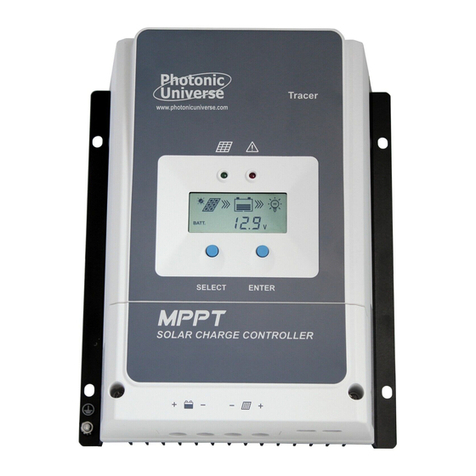
Photonic Universe
Photonic Universe AN Series user manual
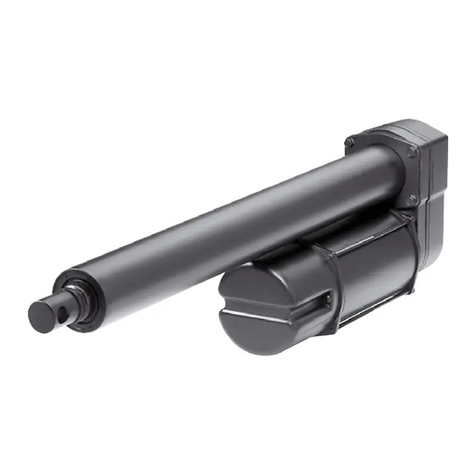
THOMSON
THOMSON Electrak GX installation manual
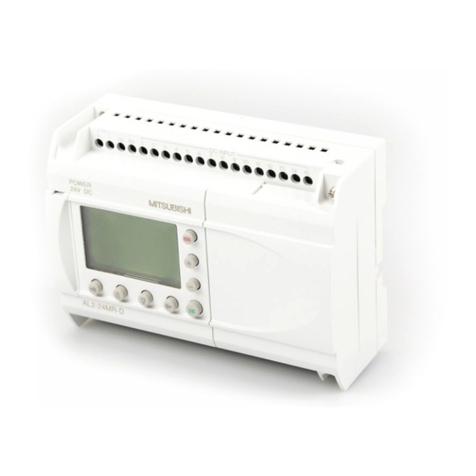
Mitsubishi
Mitsubishi AL2 Series Programming manual
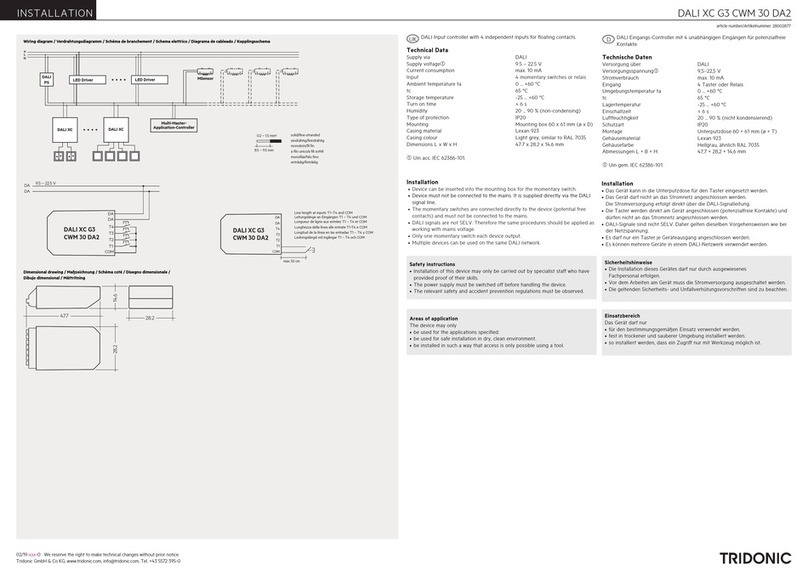
Tridonic
Tridonic DALI XC G3 CWM 30 DA2 Installation

